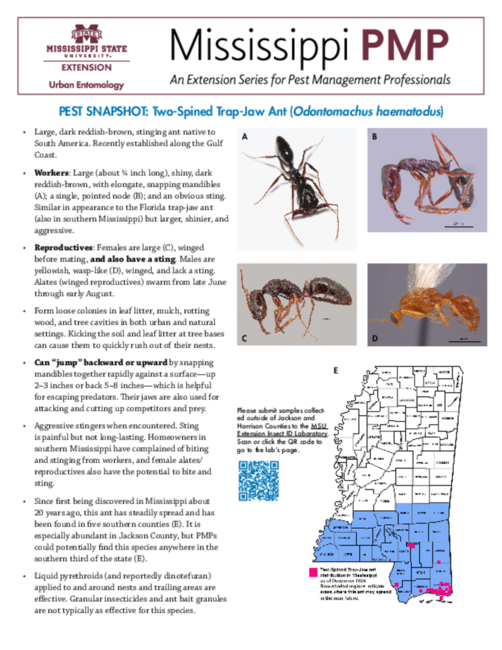P4123
PEST SNAPSHOT: Two-Spined Trap-Jaw Ant (Odontomachus haematodus)

- Large, dark reddish-brown, stinging ant native to South America. Recently established along the Gulf Coast.
- Workers: Large (about 1/4 inch long), shiny, dark reddish-brown, with elongate, snapping mandibles (A); a single, pointed node (B); and an obvious sting. Similar in appearance to the Florida trap-jaw ant (also in southern Mississippi) but larger, shinier, and aggressive.
- Reproductives: Females are large (C), winged before mating, and also have a sting. Males are yellowish, wasp-like (D), winged, and lack a sting. Alates (winged reproductives) swarm from late June through early August.
- Form loose colonies in leaf litter, mulch, rotting wood, and tree cavities in both urban and natural settings. Kicking the soil and leaf litter at tree bases can cause them to quickly rush out of their nests.
- Can “jump” backward or upward by snapping mandibles together rapidly against a surface—up 2–3 inches or back 5–8 inches—which is helpful for escaping predators. Their jaws are also used for attacking and cutting up competitors and prey.
- Aggressive stingers when encountered. Sting is painful but not long-lasting. Homeowners in southern Mississippi have complained of biting and stinging from workers, and female alates/reproductives also have the potential to bite and sting.
- Since first being discovered in Mississippi about 20 years ago, this ant has steadily spread and has been found in five southern counties (E). It is especially abundant in Jackson County, but PMPs could potentially find this species anywhere in the southern third of the state (E).
- Liquid pyrethroids (and reportedly dinotefuran) applied to and around nests and trailing areas are effective. Granular insecticides and ant bait granules are not typically as effective for this species.
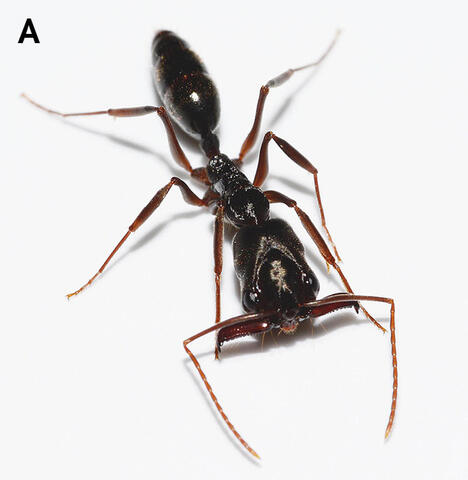
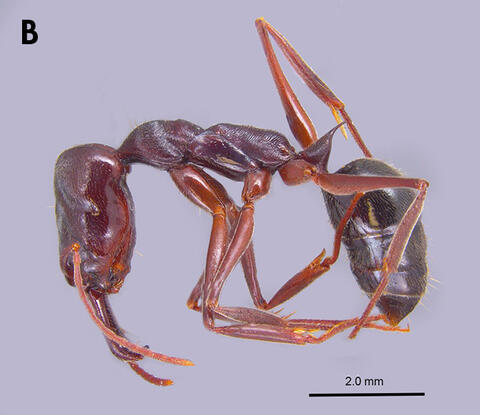
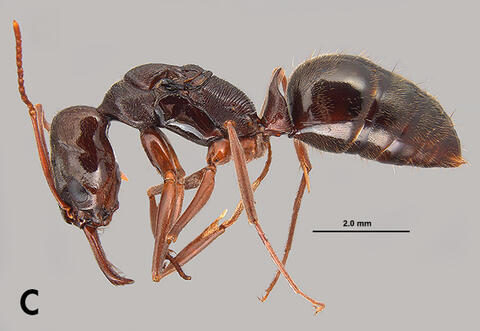
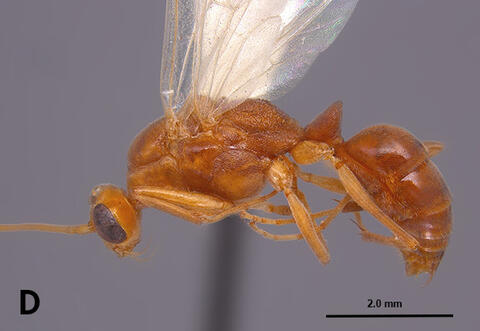
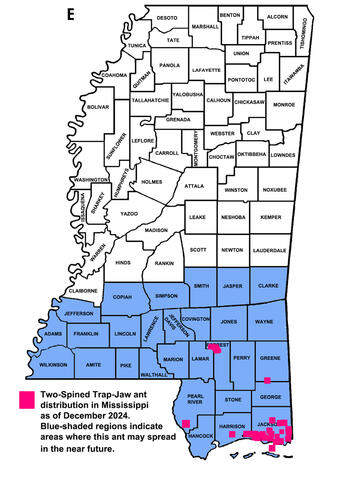
Please submit samples collected outside of Jackson and Harrison Counties to the MSU Extension Insect ID Laboratory.
This work is partially supported by Crop Protection and Pest Management, Extension Implementation Program, award no. 2024-70006-43496, from the U.S. Department of Agriculture’s National Institute of Food and Agriculture. Any opinions, findings, conclusions, or recommendations expressed in this publication are those of the author(s) and should not be construed to represent any official USDA or U.S. Government determination or policy.
Publication 4123 (POD-07-24)
By J. Santos Portugal III, PhD, BCE, Assistant Extension Professor, Urban and Public Health Entomology, Agricultural Science and Plant Protection, and Joe MacGown, Research Technician/Scientific Illustrator, Mississippi Entomological Museum, Agricultural Science and Plant Protection. All images courtesy of Joe MacGown.
The Mississippi State University Extension Service is working to ensure all web content is accessible to all users. If you need assistance accessing any of our content, please email the webteam or call 662-325-2262.
